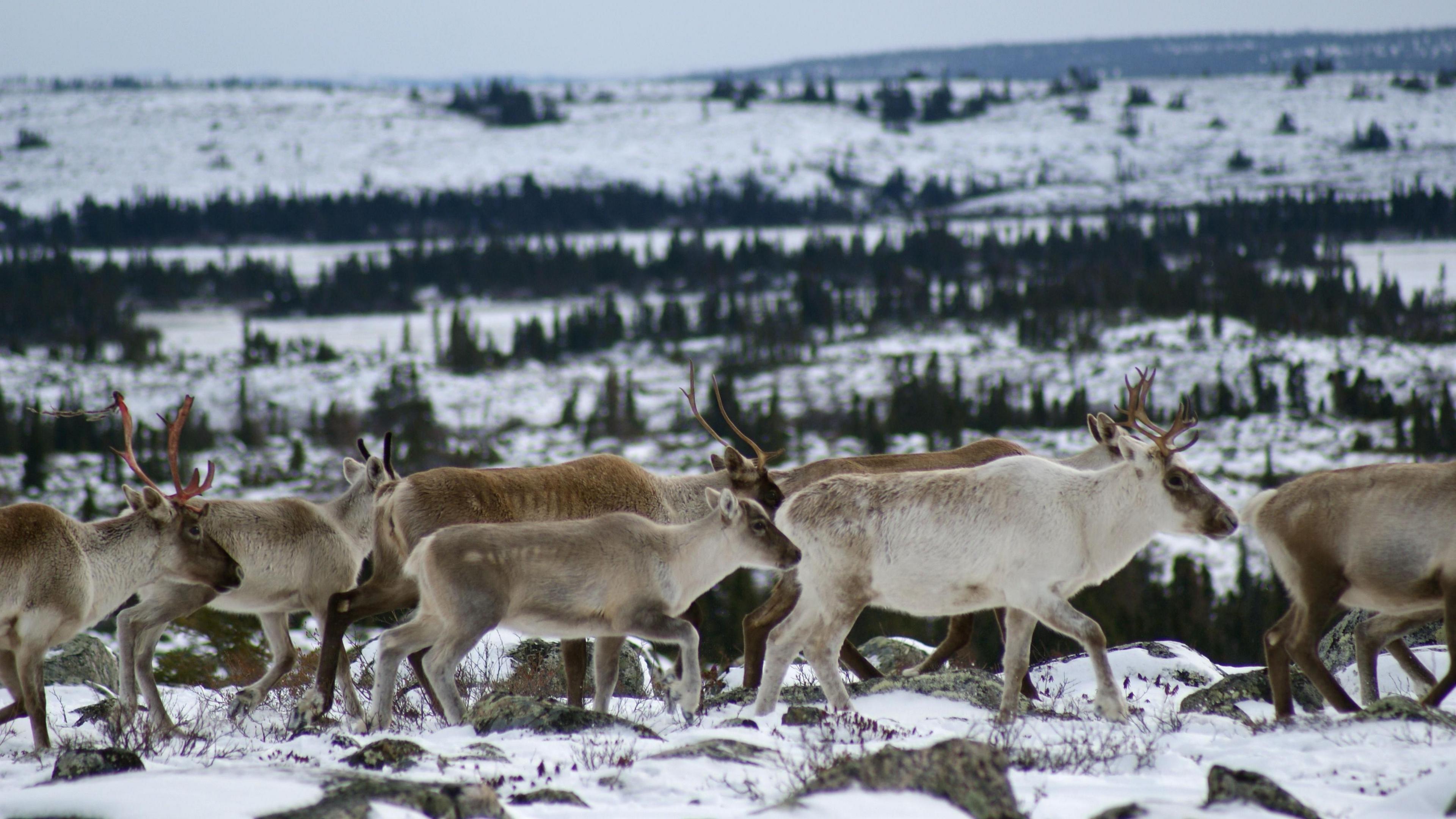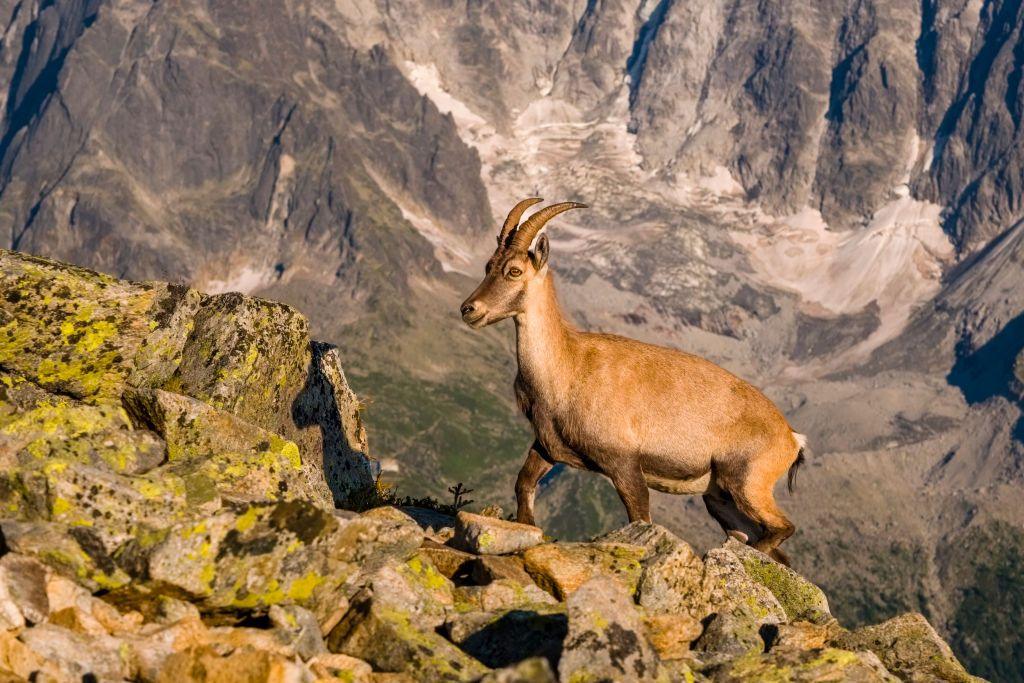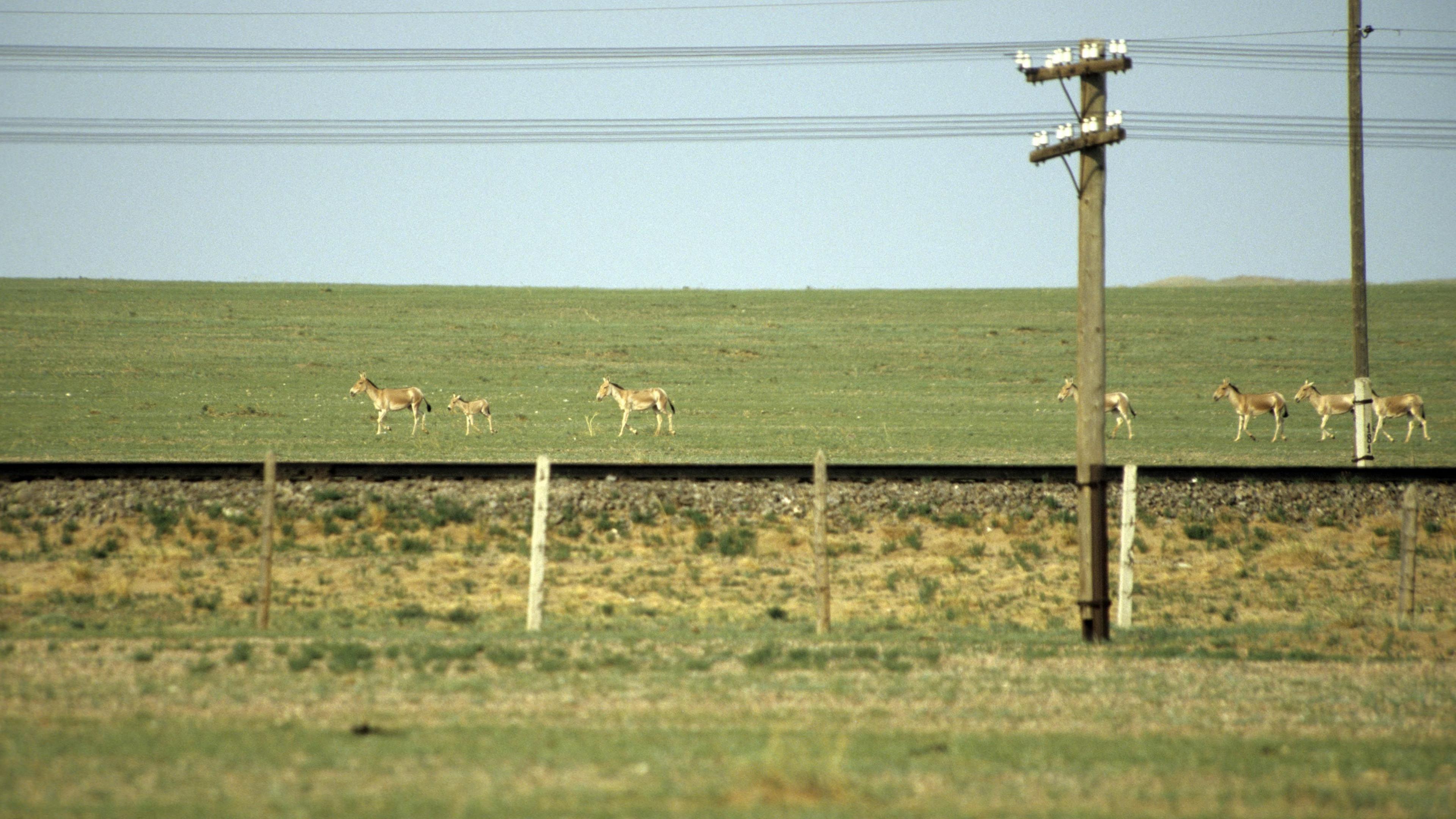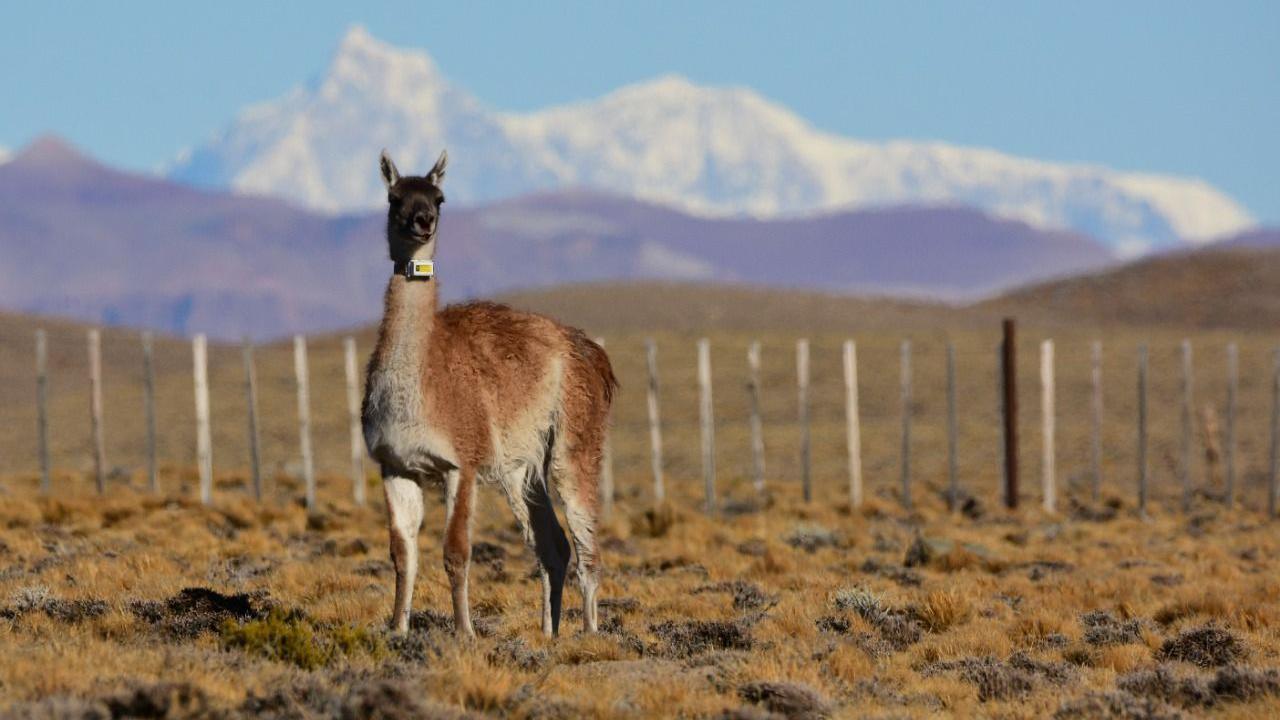Elephant, zebra and gazelle migration routes revealed in new map

Caribou must keep moving to find food throughout the year
- Published
An online map has been launched which will give people the chance to see the migration paths of hooved mammals around the world.
Animal migration is when animals travel from one place to another, sometimes thousands of miles a year, in search of better conditions or food.
The new online map is for hooved mammals - known as ungulates - and includes gazelles, antelopes and zebras.
Grant Hopcraft from the University of Glasgow and a member of the Global Initiative on Ungulate Migration, said that the planet had reached "an environmental tipping point".
He continued that it was urgent to track the migration of these animals to better target conservation efforts.

Alpine ibex make elevational migrations. Though they don’t cover vast distances, these movements are essential for their survival in extreme winter conditions.
The Atlas of Ungulate Migration is an interactive map which covers 20 global populations of hooved mammals, from the Serengeti wildebeest to the African elephant.
It was developed by over 80 scientists through the The Global Initiative on Ungulate Migration (GIUM) under the Convention of the Conservation of Migratory Species of Wild Animals (CMS) - an environmental United Nations agreement.
The researchers analysed tracking data, much of which produced by technology like tracking collars, to produce the atlas.
Fur trackers could help monitor polar bear behaviour
- Published17 July 2024
'Remarkable' mammal migration, the largest on Earth, shown from above
- Published27 June 2024
Work begins on biggest-ever wildlife crossing
- Published27 April 2022
What does migration look like for different animals?

African elephants in Zimbabwe and Botswana
In the dry season more than 40,000 elephants roam Hwange National Park because there are artificial waterholes which they can drink from.
From October and December, when the rains arrive, some of the elephant families leave the unfenced park and migrate to Botswana.
Some move as much as 180 miles, which is roughly the distance between Manchester and London, within a few weeks.
Others go southwest to another park.
As the dry season begins they go back to Hwange National Park.

Alpine ibex in France
Alpine ibex in the Beldonne mountains move from steep rocky cliffs at a lower height in winter to meadows higher up in the summer.
The ibex use steep snow-free corridors and avoid crossing roads, even to get to other mountain ranges on the opposite side
Why is hooved migration important?

The Khulan or Mongolian wild ass travels long distances often challenged by fenced railways
Migratory mammals are an important part of the Earth's ecosystems and provide much of the prey for the world's carnivores.
The migrations also contribute to local and regional economies through harvest and tourism.
Many hoofed migrations are in steep decline due to human activity like roads, fences, and other types of development - which are expanding in many of the landscapes required by migrating herds.
Climate change also disturbs migration patterns, by altering the distribution of water, snow, ice and plants.
How can tracking migration help conservation?

Tracking collars like this show on a guanaco, the largest hooved mammal in South America help scientists gather data on migration
Experts say tracking and logging migration routes is important in order to improve conservation efforts.
Matthew Kauffman, a wildlife biologist with the U.S. Geological Survey (USGS) and a member of GIUM’s scientific advisory board said this:
“This atlas represents a major milestone for conservation worldwide, and we believe the migration maps will be a tangible and effective tool to help stem the loss of the world’s ungulate migrations.”
The CMS says that the corridor maps are already being used in North America and Europe to look at removing or changing fences and put in road-crossing structures.
